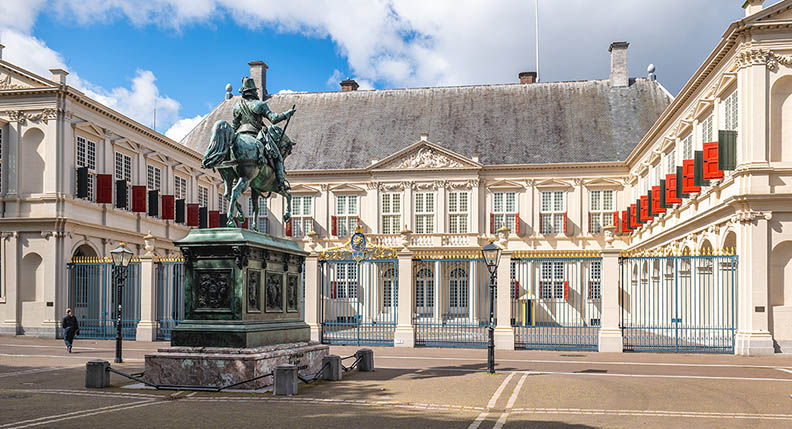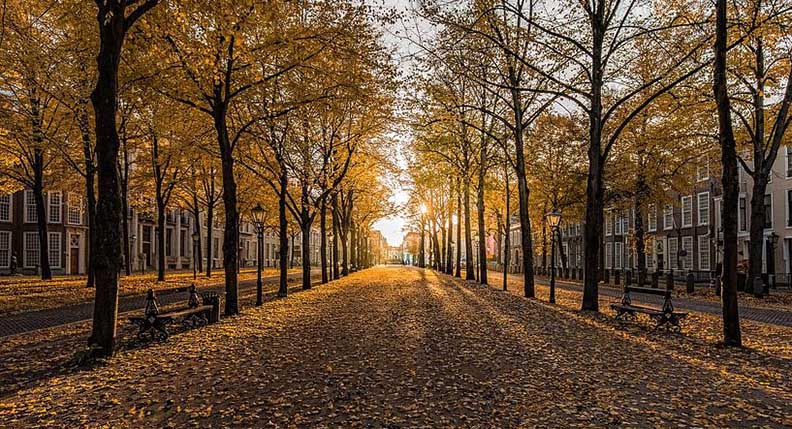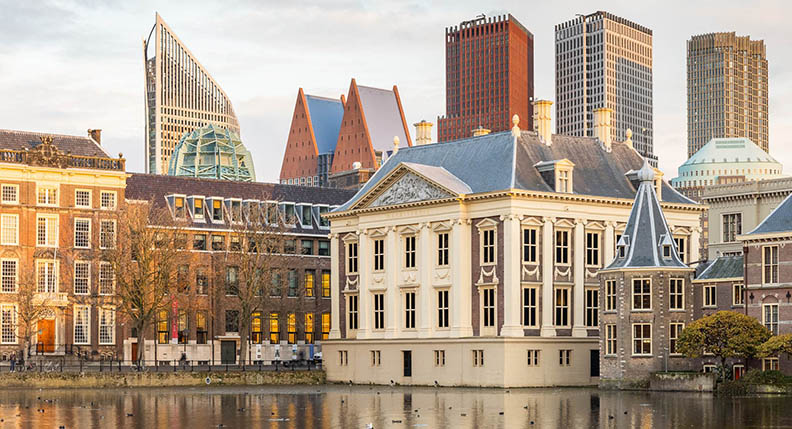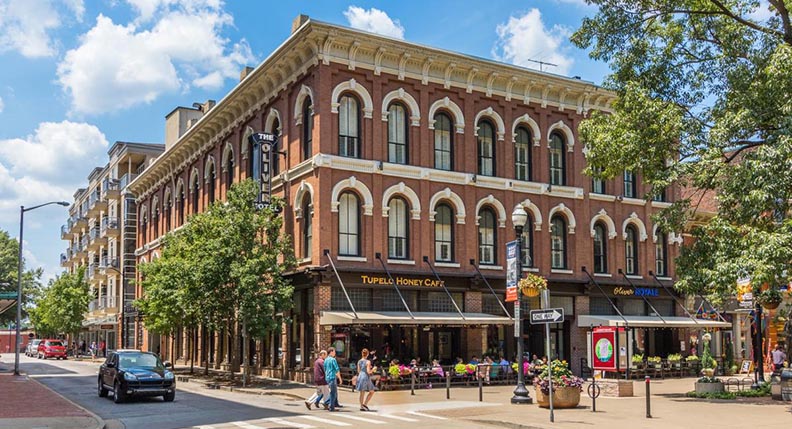The Hague, located in the western part of the Netherlands, is a city steeped in rich history and cultural heritage. As one of the political capitals of the Netherlands, The Hague is not only the home of many international organizations and government institutions, but it also boasts a cultural landscape that is equally captivating. Walking through the streets of this city, one can easily observe a blend of ancient buildings and modern infrastructures, with historical traces visible at every turn. From museums to historical buildings, the cultural heritage of The Hague offers an enriching experience for every visitor.
1. The Historical Background and Cultural Atmosphere of The Hague
The history of The Hague dates back to the Middle Ages, when it was an important center for trade in the Netherlands. Over time, the city gradually developed into the political and judicial center of the country. Many international courts and government offices are based here, earning The Hague the nickname “The City of International Law.” Beyond its role as a political center, The Hague is also rich in cultural atmosphere, which is evident in its museums, art galleries, and historical architecture.
2. A Tour Through The Hague’s Museums
(1) Mauritshuis Museum
Mauritshuis is considered one of the most important art museums in the Netherlands. Located in the city center of The Hague, it is housed in a building that exudes classical charm. The museum’s collection boasts masterpieces from the Dutch Golden Age, including the iconic “Girl with a Pearl Earring” by Vermeer and Rembrandt’s “The Night Watch.” Each artwork tells a story about Dutch history and art, making it an ideal destination for those seeking to explore the nation’s artistic legacy.
In addition to its exceptional art collection, the Mauritshuis itself is a sight to behold. Originally a 17th-century aristocratic residence, the building has been meticulously restored and expanded to become the museum we know today. Standing by the museum’s windows, one can enjoy a picturesque view of The Hague’s city center.
(2) Haags Historisch Museum (The Hague Historical Museum)
If you are interested in the history of The Hague, then the Haags Historisch Museum is a must-visit. The museum showcases the city’s history from the Middle Ages to the modern era, covering aspects such as urban development, daily life, and cultural changes. Exhibits include ancient maps, historical documents, and various artifacts, providing visitors with a deep insight into the city’s past.
The museum is housed in a 17th-century former monastery, adding to the historical atmosphere of the visit. Walking through the museum is like traveling back in time, with each exhibit offering a glimpse into The Hague’s story.
(3) Gemeentemuseum (Municipal Museum)
One of the most modern museums in The Hague, Gemeentemuseum is a place to explore 20th-century art, particularly the works of the famous Dutch painter Piet Mondrian. The museum houses a wide variety of exhibits, including paintings, sculptures, and installations. Whether you are a fan of modern art or simply curious about the unique appeal of Dutch art, this museum is an excellent choice.
The museum’s building itself is a masterpiece, designed by the renowned Dutch architect Henry van de Velde. Its minimalist design is a perfect example of modern architecture, beautifully blending art and design in one space.
3. Historic Buildings and Landmarks

(1) Paleis Noordeinde (Noordeinde Palace)
Paleis Noordeinde is one of the most iconic historical buildings in The Hague, serving as the official residence of the Dutch royal family. While the palace is not open to the public, visitors can admire the building’s grand exterior. The palace is surrounded by beautifully manicured gardens, and its regal atmosphere is evident from the moment you approach.
When the royal family is in town, grand ceremonies take place in the streets of The Hague, and although the palace itself is not open for tours, you can still take excellent photos in front of the grand building.
(2) Vredespaleis (Peace Palace)
The Peace Palace is another key landmark in The Hague, symbolizing international law. The architecture of the palace blends neoclassical and Gothic elements, creating a majestic and solemn atmosphere. This building is home to the International Court of Justice and the Permanent Court of Arbitration, making it the epicenter of global judicial proceedings.
Visiting this palace feels like stepping into the heart of international law. The majestic exterior and serene environment offer a glimpse into the workings of global justice, making it a must-see for those interested in the law and international relations.
(3) Oude Stadhuis (Old City Hall)
The Old City Hall of The Hague is one of the oldest municipal buildings in the Netherlands, dating back to the 16th century. It was once the location of the city’s government offices, and today, it continues to host various cultural events and ceremonies. The building’s grandeur and historical significance are reflected in the ornate details of its facade and the imposing halls inside.
The Old City Hall’s architectural style is unique, combining wooden structures with stone elements, a hallmark of 16th-century Dutch architecture. Standing in the square outside the City Hall, visitors can feel the weight of history surrounding them.
4. Exploring The Hague’s Neighborhoods and Culture
(1) Scheveningen Beachfront
Scheveningen, one of The Hague’s most famous seaside areas, offers a unique blend of beach resort charm and historic architecture. The long stretch of sandy beach is lined with numerous resorts and cultural institutions. For instance, the Scheveningen Maritime Museum showcases the Netherlands’ rich naval history, displaying artifacts from the Dutch Golden Age of sea exploration.
A walk along the beachfront not only allows you to breathe in the salty sea air but also gives you the opportunity to admire the historical buildings and cultural sites along the coast. The area is perfect for those looking to blend relaxation with history.
(2) Lange Voorhout Street
Lange Voorhout is a historic street in The Hague, famous for its continuous line of old buildings and gardens. In the past, this street was home to the city’s aristocracy, and many of the buildings still retain their 18th-century charm. As you walk down the street, you can feel the echoes of The Hague’s past.
The buildings here are not only of historical importance but also house several museums and galleries, displaying Dutch art and culture. Each structure tells its own part of The Hague’s history, and the street itself is a perfect place to wander, discovering the city’s architectural heritage.

5. The Continuation and Fusion of Cultural Heritage with Modernization
The Hague is not only preserving its rich cultural heritage but also embracing modernization. Whether through the opening of modern art museums or the restoration of historic buildings, the city continually seeks to integrate the past with the present, creating a vibrant cultural landscape for visitors.
Many of the city’s historic buildings have been carefully restored and now coexist with contemporary architecture. This fusion of old and new offers visitors a chance to experience the best of both worlds, enjoying the city’s deep cultural roots alongside modern amenities.
Walking through the streets of The Hague, one can appreciate the depth of history while simultaneously enjoying the dynamic energy of modern culture. The city’s cultural heritage is not just a relic of the past; it continues to evolve and develop, contributing to the soul of The Hague.
6. Tips and Travel Suggestions
When visiting The Hague, it’s important to allow enough time to explore the museums and historical buildings at a leisurely pace. Many of the city’s cultural sites are located in the city center, making it easy to walk between them. Most museums offer audio guides, allowing you to gain a deeper understanding of the exhibits and their historical context. For those particularly interested in certain historical buildings, local guided tours are available, providing insightful background information.
If you’re fascinated by Dutch history, The Hague is undoubtedly a place worth visiting. Here, you will not only experience the city’s historical and cultural richness but also encounter the unique artistic charm that defines the Netherlands.



